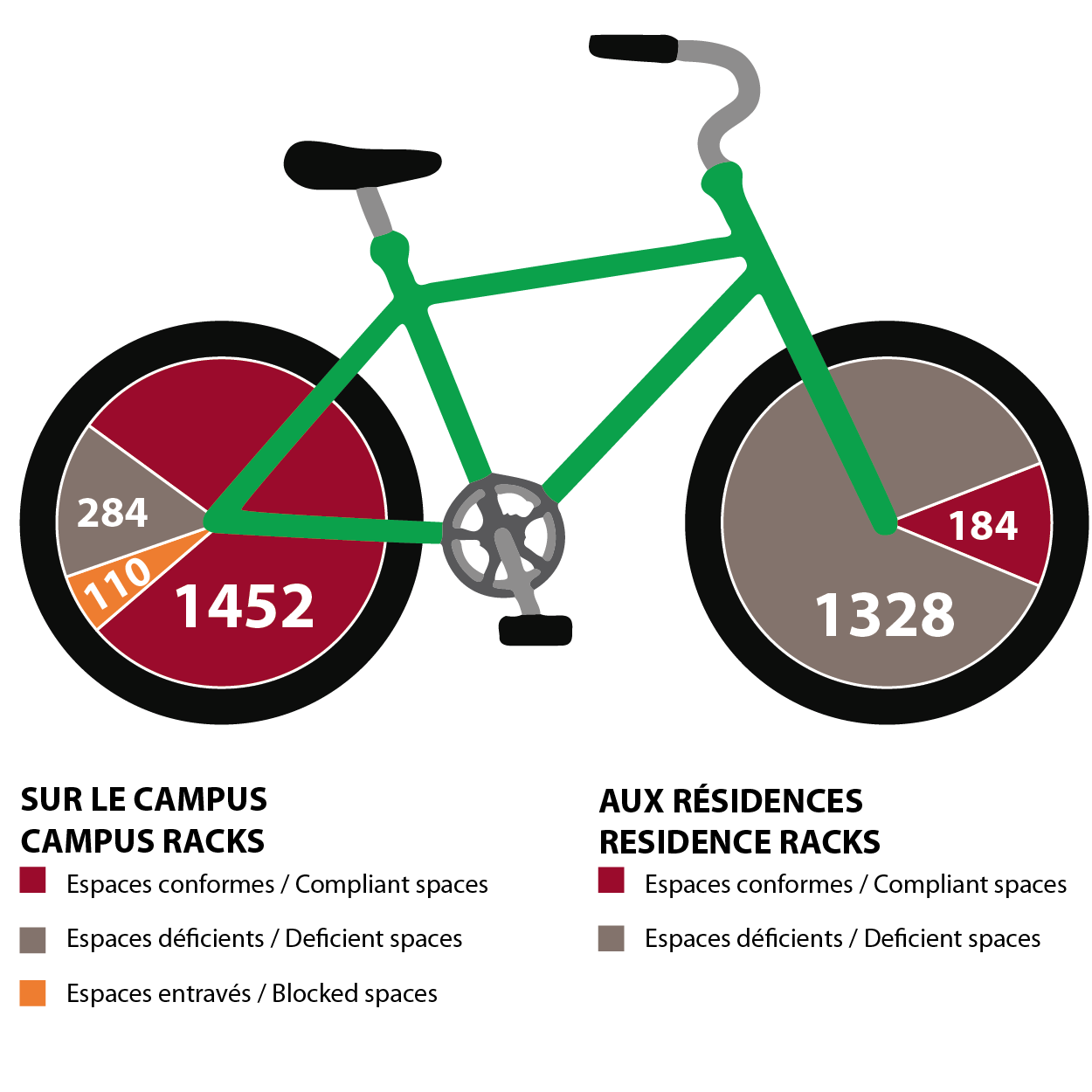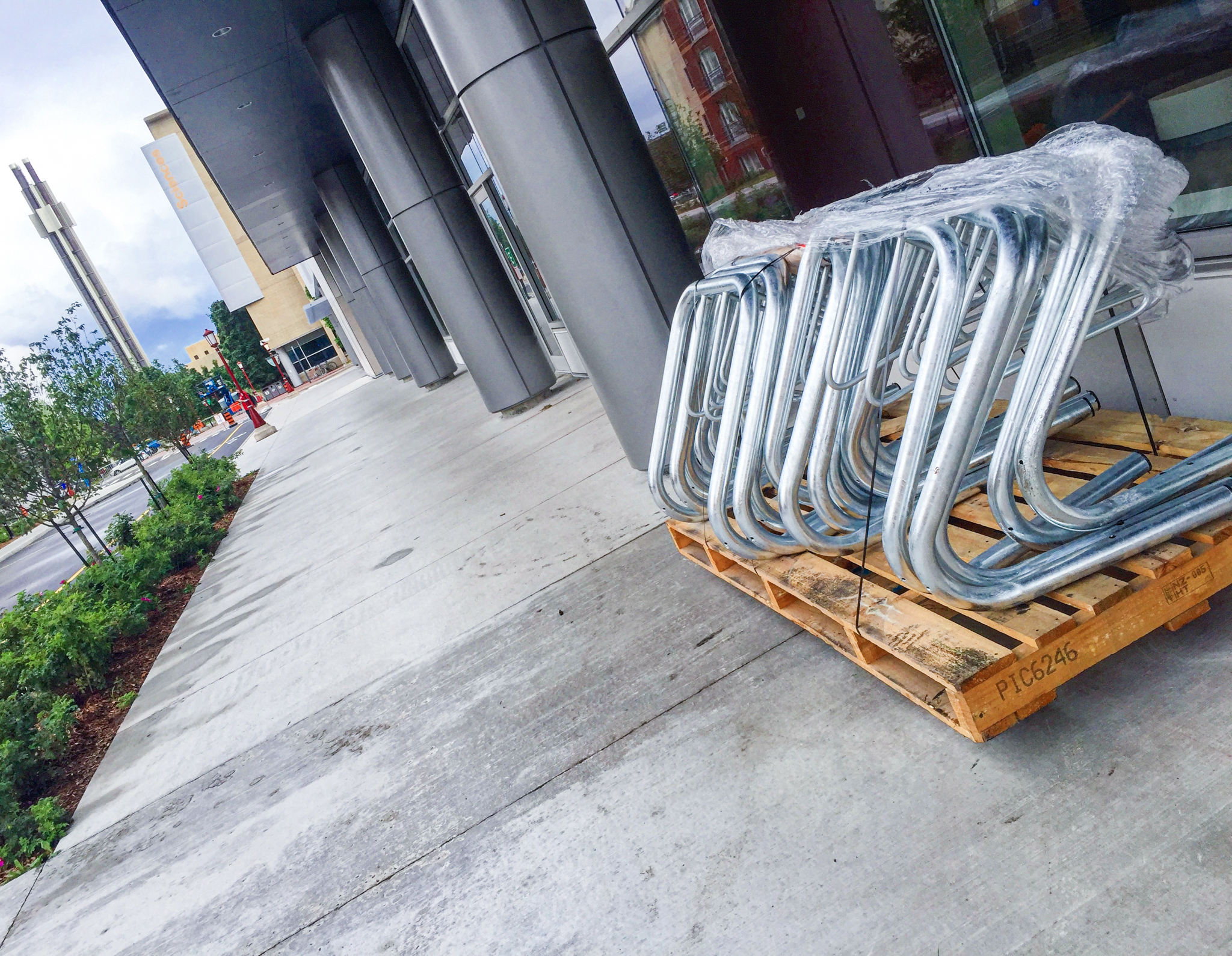The University of Ottawa is hoping to become a sustainable transportation hub with a emphasis on active transportation to achieve this goal. Using the City of Ottawa’s Zoning By-Law 2008-250 Section 111: Bike Parking Space Rates and Provisions, this report focuses on bike rack visibility, ease of use, and possible obstructions that may compromise the rack's maximum capacity. This report also draws on Bicycle Friendly Business criteria to improve the user experience of cycling on campus.
The University regularly surveys all the bike racks on campus. In 2021-22, the bike infrastructure survey included the following criteria:








